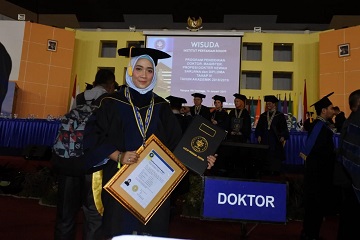Need Extra Efforts to Utilize Agricultural Waste as Animal Feed

Based on the results of the research Prof. Erika B Laconi, Permanent Professor of the Faculty of Animal Husbandry, IPB University and team, agricultural and plantation waste has a limiting factor if used as animal feed. That is a lignocellulose component that is difficult to digest in the digestive tract of ruminants and causes low animal productivity. Therefore, it is important to carry out certain processing techniques on waste to improve nutritional quality and in turn contribute to increasing animal productivity. Processing techniques for agricultural and plantation waste itself consist of physical, chemical and biological techniques.
One of the researches of IPB doctoral program students, Sari Putri Dewi, entitled Increasing the Quality of Agricultural and Plantation Residues Using Combination of Fiber Cracking Technology and Urea for Ruminant Feeds, revealed that the technology called Fiber Cracking Technology (FCT) was able to reduce fiber fraction and increase digestibility in ruminants.
According to the Best Doctoral graduate at the graduation in January 2019, the reduction in fiber fraction was shown from the evident damage of lignocellulose bonds in the Scanning Electron Microscopy (SEM), X-Ray Difraction (XRD) and Fourier Transform Infrared (FTIR) spectroscopic methods.
Sari and the guidance team consisting of Dr. Anuraga Jayanegara, Dr. M. Ridla, Prof. Erika B Laconi made a new innovation in the form of FCT technology. This tool is useful for breaking down fiber in high-fiber materials which are usually found in products followed by agriculture and plantations. Such as rice straw, palm fronds, oil palm empty fruit bunches, cocoa pods, coffee skin, corn corn straw straw, corn cobs, sugarcane shoots and bagasse.
“This experiment aims to evaluate the effects of FCT technology and the addition of urea to the nutritional value of rice straw, palm oil leaves, empty bunches of oil palm, cocoa and coffee husks,” he said.
In previous studies it was known that a combination of high temperature, high pressure and urea has been shown to increase the nutritional value of rice straw and oil palm empty bunches. Urea is preferred over ammonia because it is safe, easy to use and easily obtained.
“This experiment is a continuation of previous studies to explain the deeper mechanism of increasing the nutritional value of agricultural and plantation waste using a combination of high temperature, high pressure and urea. Based on the results of the research in my dissertation, I believe this innovation will be useful for the community that the by-product of agriculture and plantations can be used as an alternative feed for ruminants, “he added. (dh / zul)



